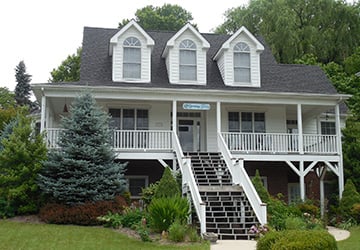When home buyers are looking at homes that may need structural or cosmetic renovations and a significant investment over the amount of the mortgage, an FHA 203(k) loan can provide the bridge financing they may need. As with other mortgages, the buyer’s income, assets, payment ability, and liabilities are still considered in the loan decision. This loan provides a way for some buyers to get a great financing option to buy a home they may not have otherwise been able to buy.
Qualifying for the Loan
The FHA 203(k) loan allows buyers to include the renovation costs into the mortgage of the home. Potential homeowners interested in applying for an FHA 203(k) loan will need to start by seeking out an FHA-approved lender. To qualify for the amount of mortgage plus renovation costs, the lender will take into account the potential home buyer's assets, income, and repayment abilities, like a regular mortgage. Typical documentation that is required for home mortgages will also be required during this type of loan application process (Social Security number, documents verifying income, debts, and credit score). You can rest easy knowing your 203(k) lender will guide you every step of the way.
This loan requires a minimum 3.5% down payment per FHA loan requirements if your credit score is 580 or higher. With a lower credit score, between 500-579, you'll pay a 10% down payment. The loan amount will also need to be below the FHA maximum loan amount in your area, generally $356,362 in low-cost areas and $822,375 in high-cost areas.
The largest requirement to qualify and receive this type of financial support from the FHA is to provide a full proposal for the intended repairs or renovations. You acquire the proposal from an FHA appraiser. The appraiser will determine the home’s current value as well as the expected future home valuation, after the repairs or renovations. The home improvements paid for with the loan must be completed by a licensed contractor, in most cases.
-
Apply for the loan
-
Get approved
-
Choose a contractor
-
Get bids for repairs
-
Close the loan
-
Complete repairs
-
Move in
About the Loan

The FHA 203(k) loan is subdivided into two different types of home renovation loans, the limited or "Streamlined" and the Standard. The difference depends on how much you need to borrow and what you want to do with the money. A Streamlined FHA 203(k) loan is for homes that do not require structural repairs and is capped at $35,000. The Streamline loan does not allow for structural changes to the house or additions.
A Standard FHA 203(k) loan has a minimum $5000 repair amount and can be used for minor repairs and major structural renovations. Homebuyers must hire a HUD consultant to oversee the renovation when using a standard FHA 203(k) loan.
The maximum amount for structural loans is set at either a) the as-is value of the property plus renovation costs or b) 110% of the appraised property value after repairs have been completed, whichever is less. This maximum amount must still be under the FHA mortgage allowable limit for your area as mentioned above. Although these loans are available for renovations and repairs, they are not allowed for luxury installations or upgrades, such as installing a pool or a tennis court. FHA 203(k) loans can also be used when refinancing a house.
Extras
These types of loans provide a bridge in financing for homebuyers who want to buy a “fixer-upper” because of the inherent savings they provide. They also provide a contingency reserve to allow for the completion of the project in case your initial estimate does not cover unexpected project costs during the renovation process. These loans also provide buyers up to 6 months of mortgage payments to live elsewhere while remodeling a big project.
The only downside to these types of loans is the fact that the loan process and application are more involved and takes longer than traditional mortgages. Interest rates on these loans are slightly higher and require an extra fee for processing the loan. Mortgage insurance, which increases monthly payments slightly, is also required on the loan to protect lenders should you default on the loan.
FHA 203k loans are a great financial vehicle for certain buyers who qualify for financing to complete renovations, repairs, and upgrades to a fixer-upper property before moving in. It's also a great way to build equity in a short amount of time as you improve the value of the home through renovations.














